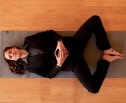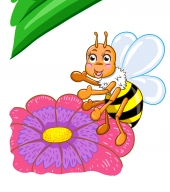This past weekend we held 2 intensives on Kundalini Yoga at 3rd Street Yoga Studio in Edmond, Oklahoma where we covered a wide range of material. For those of you who attended, see below for some of the sets we did….and for those who missed it, try out some of the techniques on your own. Looking forward to seeing you all again!
On Super Saturday Sadhana we did a few standing sets including “Yogaerobics” while chanting “Har” numerous times (see Dr. Gururattan Kaur’s book “Relax and Renew”), “Healthy Body Kriya”, Kriya to Make Your Skin Radiant”, and ‘Total Balance Kriya”. Apart from having a stronger nervous system, the participants will at least have some toned arms after that last challenging one!
Sunday’s workshop honed in on dealing with “negative” emotions like anger and fear as well as bringing more positivity into your life. Being positive is good for your health, which is not just unfounded, new age/yoga talk, as you can see for yourself by clicking on this link from the Mayo Clinic.
After a variety of Kundalini Yoga warm-ups, we took Miracle Bend, Tranquilize your mind in 3 minutes, Meditations for the first and fourth chakras and Meditation for Glandular Balance and Bliss (all three of those from the book “Meditation as Medicine” by Dr. Dharma Singh Khalsa, which I highly recommend for any Kundalini Yoga practitioner).
“The Last Meditation” made several of us laugh as we tried to chant Wahe guru/wahe guru/wahe guru/wahe jio several times in one breath AND we finished with a meditation to make the impossible possible (check back in a few days…we will update this with a link to the mantra we used so you can do an 11 minute meditation with a voice recording).
A few people were wondering about the delicious chai we drank after class…noting that many of us are sick of spending $4/cup on boxed chai. I personally never measure how much of each ingredient I put in…I just put in stuff until it tastes right..so here are approximations: 3 inches of FRESH and preferably organic ginger root, peel, chop and put in boiling water (a bit more water than you would want to drink…so for this recipe, I made enough chai for about 14 servings!), 4 cinnamon sticks, 2-3 bags of organic black tea, a tablespoon ish of cardamom, a dash of black pepper and honey or agave syrup to taste….for this weekend I used organic rice milk in place of some of the water but you can use cow milk, soy milk, etc. Keep heating and stirring and send out some good vibes into your tea. Then turn down the heat to low and let simmer, covered for 30 minutes or so. Drink then or drink later. It becomes spicier the longer the ginger soaks. Drain tea/spices/ginger away before drinking. Cheers!




 The Gift of Womanhood is creatively laid out into 30 lessons that give you a wealth of information, inspiring quotes and methods for coming into your true self as a woman as well as reaching out to female students that you teach. Each of the lessons comes with corresponding kriyas (yoga sets) and meditations to give you the experience of each lesson. What’s so great about this is that it lays out a very clear plan of creating a practice for yourself, or if you already have a regular sadhana (daily practice), enables you to intelligently select the set or meditation that you need at the moment.
The Gift of Womanhood is creatively laid out into 30 lessons that give you a wealth of information, inspiring quotes and methods for coming into your true self as a woman as well as reaching out to female students that you teach. Each of the lessons comes with corresponding kriyas (yoga sets) and meditations to give you the experience of each lesson. What’s so great about this is that it lays out a very clear plan of creating a practice for yourself, or if you already have a regular sadhana (daily practice), enables you to intelligently select the set or meditation that you need at the moment.

